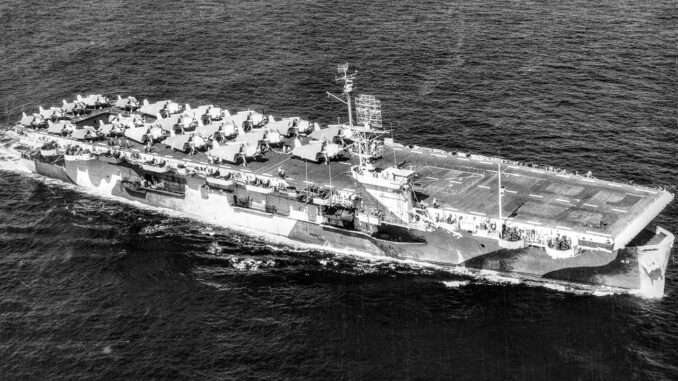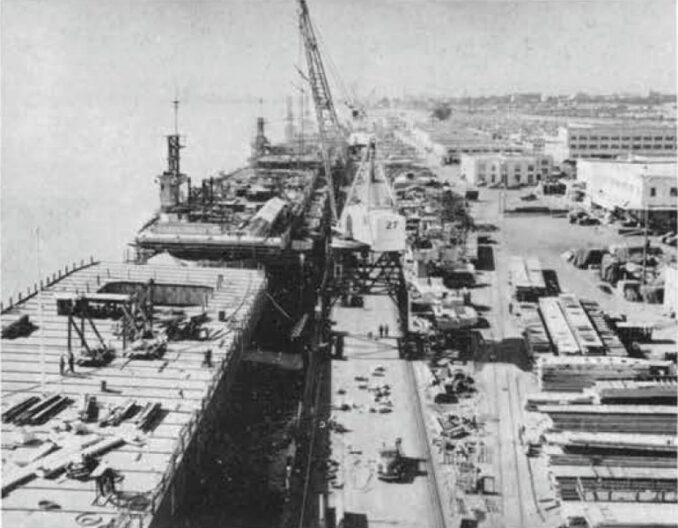
In the weeks and months following the attack on Pearl Harbor, government and industry leaders scrambled to crank up factory production in order to meet the wartime needs of the United States and our allies. Everything was needed, from bullets to battleships. Building ships of all types, from cargo vessels to warships, was a labor-intensive top priority requiring massive amounts of manhours and materials – especially steel.
Industrialist Henry Kaiser had worked with the United States Maritime Commission in the 1930s to build merchant ships. In the wake of December 7, the government wanted him to build Liberty ships, troop transports, and tank landing ships (LST) by the hundreds – practically overnight, if possible. To achieve those goals the Kaiser Shipbuilding Company constructed a total of seven shipyards, four in California and three on the Columbia River in the Pacific Northwest. Of the latter, two were built on the Portland, Oregon side and one on the Vancouver, Washington side.
By mid-1942 it became clear to the US Navy that many more aircraft carriers would be needed, both in the Atlantic and the Pacific. Prior to the war, the big fleet aircraft carriers took three years to build. The war wouldn’t wait that long, so the Pentagon embraced a new strategy: small aircraft carriers that could perform convoy escort duty and deliver airplanes of all sizes to overseas bases. On 3 November 1942, Kaiser’s Vancouver shipyard laid the keel for the first of fifty escort carriers (also known as baby flattops or jeep carriers) that would be built with astonishing speed and efficiency.

In months, the population of the City of Vancouver swelled from 18,000 to 80,000 people, all needed to support the shipyard, which employed 36,000. New hires at first were locals, but many came from all over the country mainly by train. New arrivals slept wherever they could rent or find shelter, often settling for floorspace in a garage or backseat of a car. Even old buses became improvised hotels. Housing this population explosion challenged city government which handled it with a newly created housing authority. Several new neighborhoods were built, all but one of which still exists today. (One was destroyed in 1948 by river flooding).
Shipyard work was dangerous. Three shifts a day, every day of the year operated to turn out as many ships as possible, as fast as possible. Accidents, injuries, and deaths happened.
Taffy 3, comprised of six Vancouver-built escort carriers along with several destroyers, held off the main Japanese task force during the Battle of Leyte Gulf on 25 October 1944, successfully defending landing forces that otherwise would have been annihilated. But that story will have to wait for another time.
“How a small town built 50 Aircraft Carriers in 16 months.” (5:47) [Cannot embed, click here to open in new window.]
“Hello History Kaiser Shipyards” (3:33)
“Kaiser Shipyards worker: Don Millar” (2:40)
